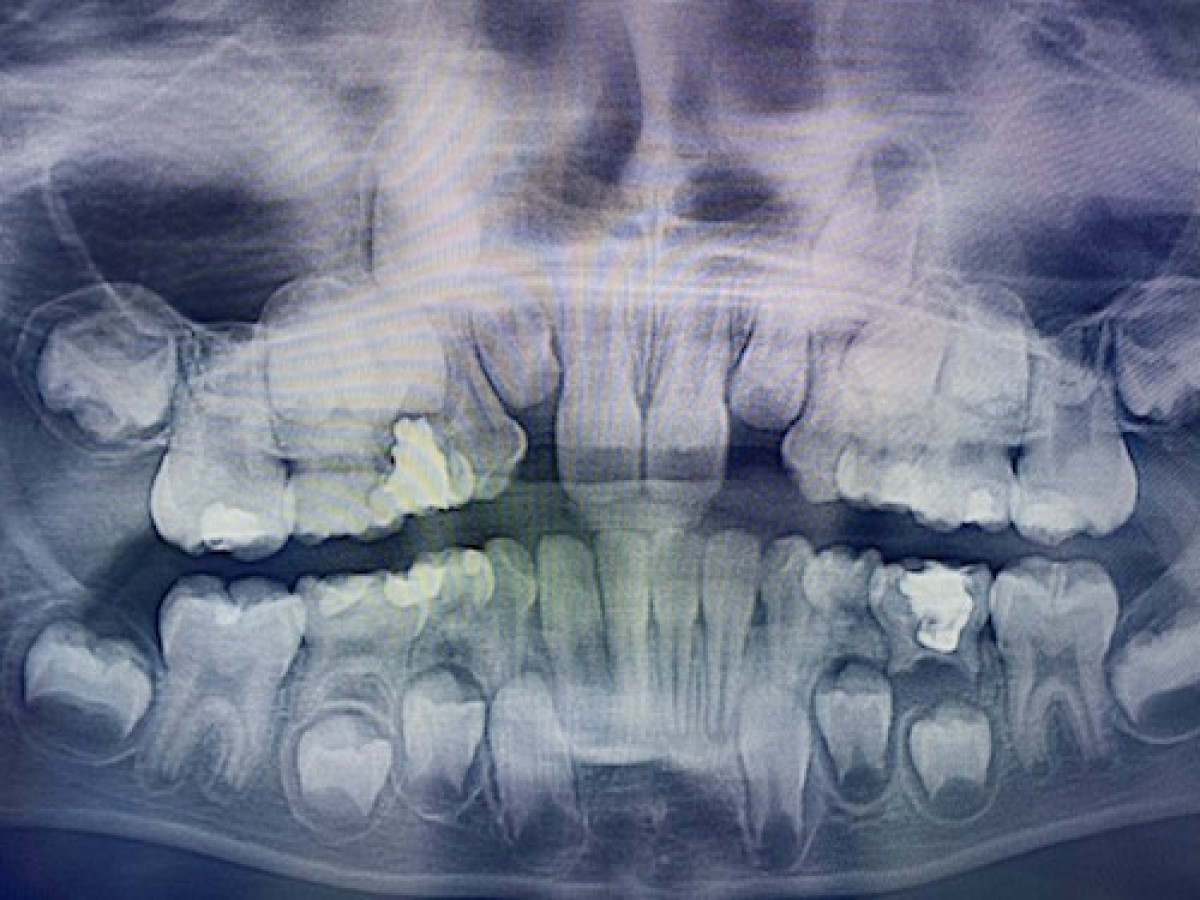
The Hall Technique: a misunderstood method against cariuous primary molars
Alessandra Abbà
The high frequency of carious lesions in primary teeth is one of the major public health problems during childhood. However, inadequate treatment of these cases are often found. Traditional treatment methods is based on “drill and fill” with composite resin or amalgam, with the use of rotary burs under local anaesthesia. This requires the compliance of the patient and longer treatment time. To face this problem, new methods has been studied.
The Hall technique (HT) is one of the methods used nowadays for biological sealing in carious lesions in primary molars, introduced in 2006 by Dr. Norna Hall. It’ s based on the use of preformed metal crowns (PMCs), placed on carious primary teeth without local anesthesia, caries removal, or tooth preparation. An appropriate size of PMCs should be chosen, then filled with glass ionomer cement and lastly fitted on thecarious primary teeth. This technique should arrest or at least reduce caries progression thanks to the modification of the plaque biofilm composition. Despite the good result highlighted in literature, the use of HT for carious primary molars remains controversial and is not yet part of the clinical routine.
The aim of this systematic review was to evaluated the outcomes of HT on carious primary teeth compared to the conventional dental restorations.
Materials and methods: The systematic review was carried out using the PRISMA guidelines. An advanced search was carried out in five major databases including PubMed, CINAHL plus, Cochrane library, Dentistry and Oral Sciences, and Scopus. In addition, hand search was also done using key terms in different permutations.
Results: Five studies were included (two RCTs, one quasi-experimental trial, and two retrospective). The total number of teeth assessed were 1775, of which 1325 teeth were restored using HT.
No difference between HT and other methods was found in the retrospective studies, whereas the RCTs and quasi-experimental showed a better effectiveness of HT over other treatment modalities. In meta-analysis, HT results significantly more effective over conventional restorations [risk ratio 5.55 (3.31-9.30)] (p value ≤ 0.001).
Conclusion: HT showed very successful results when compared with conventional restorations. Despite the predictable outcome and the fact that this treatment is simplified compared to the conventional restorative technique, the cost of materials and the operation time required may be obstacles to its adoption in common dental practice.
For additional information: Effectiveness of Hall Technique for Primary Carious Molars: A Systematic Review and Meta-analysis
 Read more
Read more
Editorials 10 October 2025
With proud smiles and crisp white coats, ninety-three learners from the DDS Class of 2029 and the International Dentist Pathway Class of 2028 marked the start of their dental careers at the UCSF...
Periodontology 10 October 2025
Continuous professional development (CPD) in Periodontology refers to the overall framework of opportunities that facilitate a life-long learning practice, driven by the learner-practitioner and...
TheraBreath, the #1 alcohol-free mouthwash brand in the U.S.*, has introduced a new line of dentist-formulated, clinically tested toothpastes designed to support professional oral care...
News 10 October 2025
New officers and trustees were installed at the Minnesota Dental Association’s Leadership Conference on September 19 in Minneapolis.
News 10 October 2025
Smartee Denti-Technology today announced that Professor Gang Shen, its Chief Scientist and Executive President of TaiKang ByBo Dental, has once again been named to the World’s Top 2% Scientists...










